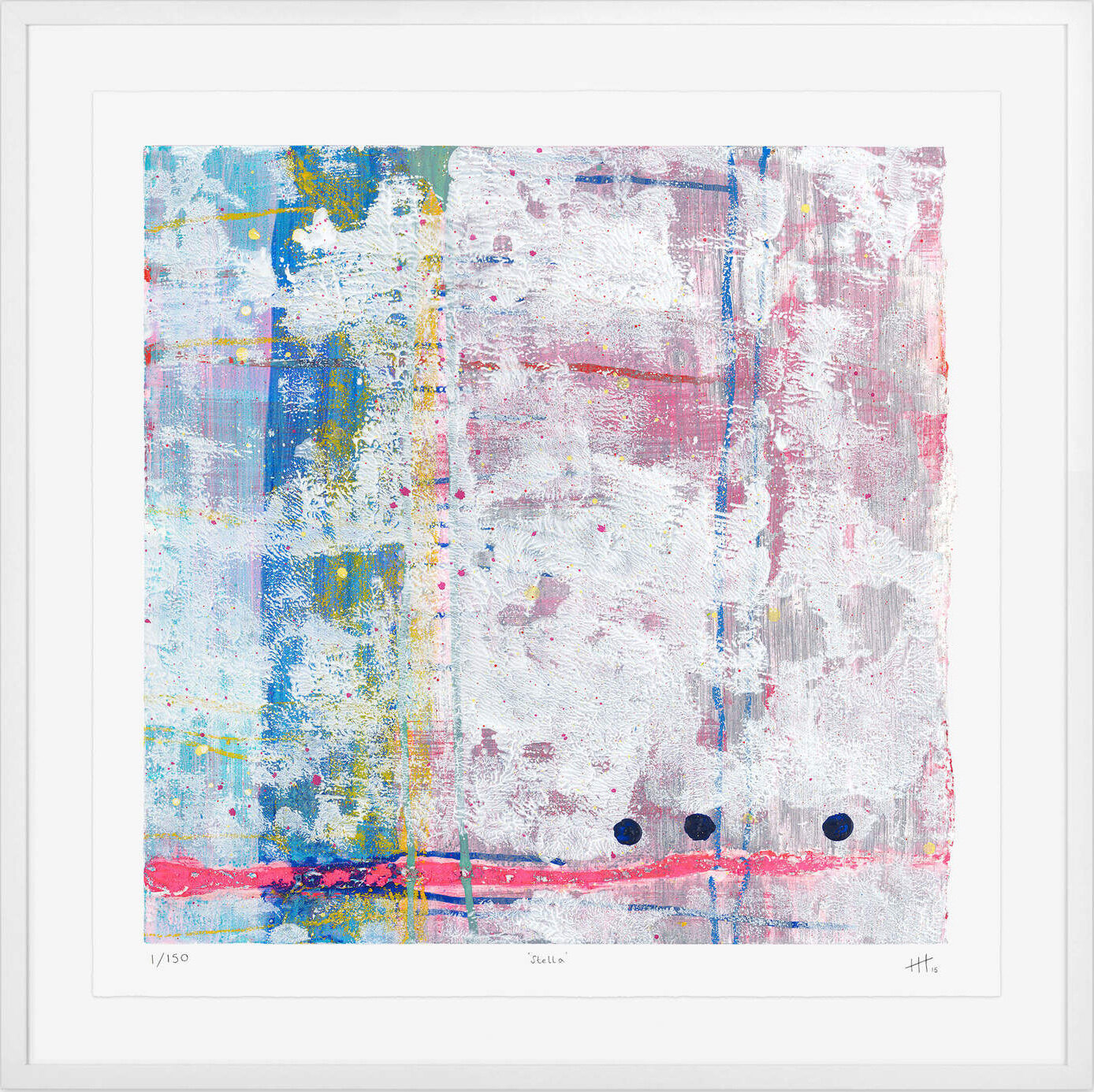Original Prints vs Art Prints
In the early stages of art collecting, particularly if you are collecting art on a budget, you will come across the terms ‘original prints’ and ‘art prints’. But what does it mean and what should you be looking for?
A print in the art industry implies that there are more than one of them, that’s how they can be bought as a more affordable option for art collectors. Here are my top tips on how to include prints in your collection:
Original prints
An original print is a work of art that has been created for the sole purpose of being a print. It includes many traditional printmaking techniques such as etching, screenprint, woodcut or linocut - the work of art is created directly onto a block/plate, which is inked up and pressed onto the paper to transfer the image. They are made by an artist, created by hand and there will be a limited edition run of that image. Because each piece is printed by hand, there are often small variations between each print, which I personally feel adds to the charm and originality of the work. Once the artist has come to an end of the edition run, the original plate will be destroyed and no more can be printed.
‘Summer Storm’ by Nigel Hall, printed by Kip Gresham of the Print Studio, Cambridge
There are a few things to consider when collecting original prints, in particular the number of prints in the edition. An artist should decide on how many are in the edition based on how many they think they can successfully print from that one block/plate. Every time they make a print, the block/plate can be slightly damaged in the process and so if they do a big run it may be that the last prints in that edition are not as defined as the first. This number will depend on many considerations such as the medium or how detailed the image is. It also tends to be that the smaller the number in the edition, the higher the value of each print - simply put, if there aren’t so many of them in the world, they command a higher price. You will know what edition the print is, as the artist will sign it with the number. It will look something like this: 1/15 - that means it is print 1 of an edition of 15. You might also see A/P on prints - this means artist proof and is a print that the artist has taken during the process to see the current printing state of the plate/block.
It is worth noting that the artist isn’t always the person who actually makes each individual print - a tradition that goes back many years. The old masters, commissioned to paint portraits of royals and noblemen, would have a studio of artists, each of whom specialised in a different part of the portrait - one perhaps the hands, another the hair. It makes sense to give the task to the best person for the job. The same applies more recently to 20th century photographers, who would have a team of assistants that would work in the darkroom to make each print. Printmaking is another specialist technique that requires extensive knowledge, skills and equipment, so it is very common for artists to work with a print studio to produce a series of works. An example of such a working studio is Kip Gresham at the Print Studio, Cambridge, who works with a huge number of well-known artists to print their work. At Fen Ditton Gallery, we have worked with sculptor and draughtsman, Nigel Hall, is one of the artists who Kip Gresham prints for.
Barbers, Oxford 2020 by Chris Pig
Personally, original prints are one of my favourite art forms. I think the skills and vision that is required to create a negative, back to front image onto the plate/block and translate that into a well-executed work of art is rather amazing. Here’s a wood engraving from my own collection, Barbers, Oxford 2020 by Chris Pig, that was shortlisted for the Fen Ditton Gallery Contemporary Printmaking Prize 2021.
Art prints
An art print refers to a digital reproduction of a work of art an artist has created in another medium. The most common example of this is a painter who makes a high resolution scan or photograph of a painting and has it digitally printed onto high-quality art paper. They aren’t affected by the erosion of the plate like the original prints, and tend to be larger print editions. Like original prints, however, you want to consider how large the edition is - the bigger the edition, the lesser value the print may have - but they tend to be less expensive than original prints to reflect that. It is also possible that they might be an ‘open edition’. If this is the case, consider if this is important to you. It basically means that the artist can created an unlimited number of these prints. From a value perspective, it will be very unlikely that it will increase, as there can always be another one printed. But if you love the image, I’d go for it. These prints should be signed by the artist or should include a certificate of authenticity.
If you are considering buying art prints, ask about the paper it is printed on. You want a good reproduction, well-matching in colour to the original, that has been printed onto high-quality archival paper. Archival paper is important - you don’t want it to fade over time. I also feel that this differentiates the print as a ‘work of art’ rather than a poster.
‘Stella’ by Harriet Hoult, limited edition print
An artist can be quite creative with the paper and quality of finish in their prints. An example of this from my own collection is a limited edition print by Harriet Hoult. Harriet’s work is very textural and expressive. Her paintings use mixed media and material to layer onto the paper and create three-dimensions aspects to the paintings. Harriet has carefully thought about how this can be reflected in her digital prints and the result is as true as they can be. Each print is on a high grade, cold press rough textured art paper with hand torn edges to maintain the essence of her original works.
Will you be adding an original or art print to your collection?
Whatever your taste or style in art, original and art prints are a great option for new and early-stage art collectors. They are an accessible way into collecting and often allows you to buy from your favourite artists and designers whose work you might not be able to afford otherwise.
Have a look at some of the original prints and art prints available at fendittongallery.com
If you want to discover more tips and ideas on how to start an art collection, join the Young Collectors community here



